Problem description:
Power supply, for some reason, false-starts on power on of the device:
the red is system +5 V supply rail, and yellow is my device's 3.3 V buck converter powered from the system's 5 V. You can see the power surge when switch is being turned on, and 3.3 V power supply also false-starts.
Here's more detailed picture of what is going on:
But in general I can not control what is going on with the system's power supply.
Due to this false start, audio subsystem experiences pop-click sound which I want to eliminate.
Research:
Thus I am looking for ways to suppress this false start influence onto the audio outputs. There's system's RESET signal, which is kind of not logical 1 when false start happens:
Red is reset signal (5V TTL), yellow is 3.3 V converter. Thus it seems I can use RESET signal to control circuit suppressing the audio output.
I am simulating the following circuit (which is not my design):
The result of simulation is:
where blue is reset (V3), green +5 V power (V1), and red is an output. Audio input (V2) is always running at 1000 Hz.
The problem is that if power is not yet there, Q2 is off and input audio signal is not pulled down.
I also considered solution based on MAX9892, but its switches are open when power is < 1.7 V, so it must exhibit the same behavior.
Question:
is there any solid-state circuit which would be "normally closed" when power is not in there?
Update, following @bobflux comments:
- I connected probes to the input and output capacitors of the 3v3 buck converter:
- now connected yellow probe to its alligator clip:
- same, closeup
- Now things become more interesting. I put my device into another platform, based on ATX power supply, and connect to the same wires. Below is an image when I turn ATX power switch on, but active power is not yet applied to the device (only standby somwhere inside it):
- now closeup
- and now I press ATX switch to turn main power up:
So the outcome of measurements is that noise comes from main receptacle power wires being connected to the mains, not from device being powered on. The first, non-ATX platform is having virtual ground and only 2 mains power wires, the second, ATX one, is expected to be properly grounded with the scope.
Small addition, it may matter: I use scope and its probes in X1 mode.
Update: agreed it is caused by the common mode transients.
Meanwhile seems I have found the cause of the pops and clicks. It is DAC UDA1334, if powering it down, and then quickly powering it up, the analog and digital parts of it improperly reset and DAC gets arbitrary value. Then, when DAC starts to be driven by writing 0 to it, the output clicks.
I suspect I must do something with Vref input of the DAC ensuring it got as low as 0.75 V during reset so that analog part properly resets. Not sure if it will reset digital part properly though, but hopefully problem is not in digital part, but in analog subsystem power up calibration, then resetting analog part properly will solve the problem.


